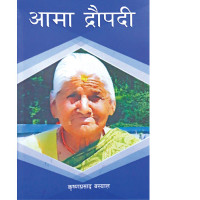- Saturday, 4 May 2024
Pungent Lines Of Haikus
Haikus, which popular essayist Shankar Lamichhane introduced for the first time six-decades ago in Nepali literature, has gained popularity in the country. This form of poetry has gripped the attention of readers while encouraging more writers to pen this form of poems our language.
We have a testimony of this kind here. It is the Jubilant Play, the under review collection of Haiku poems by Dibya Giri. Notably, author Giri is the same composer who has already unveiled his first Haiku collection in Nepali entitled “Dhuni Tapera” in 1961.
Thus, to speak broadly, the beat Haiku is no longer new in Nepal now and personally Dibya Giri, too, is a seasoned composer of this genre. But, this time the composer has extended his aim to reach readers of both Nepali and English with the translation of the Haikus of the collection into English in the book entitled The Jubilant Play.
The Haiku, as mentioned in the preface of this book by one of the veteran Haiku authors Professor Ram Kumar Panday, is that this poetry completes in three lines and 17 letters. According to him, the first and third lines of it should have five syllables and middle one is made of seven syllables. This is the standard frame and there are growing numbers of composers who are trying their best to express their sentiments through Haikus in Nepali.
Let’s come to the under review collection: How are Haikus in Nepali and in its English version in the Jubilant Play? This question automatically poses while reviewing the book. Certainly, readers need not go through pages and pages to find messages in synopsis: The seventeen syllables are there for three lines and droppings of messages are artistic here.
So, let’s see Giriji’s a few lines of Haikus:
I am with flower
Soulful heart also does bloom
The Sun of autumn
Page, 2
The next Haiku is like this:
Season of the spring
Chirping song sung by cuckoo
Ripen the bayberry
Page, 3
These are two separate Haiku poems in this collection. In the first poem flower has become a symbol to fill the sentiments of a jubilant heart. And, in this course the strong support to expand sentimental flow is provided by the third line ‘The sun of autumn’.
Similarly, three line Haiku magic has decorated the season spring, too: The bird cuckoo is meaningfully chirping and ripened bayberry highlights the beauty of the season.
The Haiku power shines further in this under review collection. Let’s also see these two Haikus, too:
Flooded Streams of tear
Engulfed in wet eyelashes
Buddha and tranquil
Page, 90
The unlighted cave
Journey of the two people
A solitude night
Page, 113
In fact, the magic of saying in the Haiku has its features to maintain for composers. But more relevant thing to mention here is: The readers of Haiku, too, need to be attentive, skillful and deep in enjoying the meaning of saying in three lines within 17 letters limit.
However, here in the Jubilant play collection the composer appears to be skillful in decoration of Haiku ideas and in selection of words to make lines rhythmically beautiful. In fact, Divya Giri, the composer of this collection, is a poet who for long has also been known as an author of Muktaks (quatrains) and Haikus both. This time he has added a new merit to his creative zeal because The Jubilant Play has carried the bilingual values of the English and Nepali and the credit of this conversion goes to translator Paru Timilsina.
In fact, the Haikus are unique in taste and one can’t test this from other beats of poetry. We must technically say it the Japanese, but if we link them to
human emotions, they are effective to stir human emotion in any language in the world. That is why it has been
lovingly promoted in the Nepali language, too.
So, in the context to greater appearance of Haikus in the Nepali newspapers, magazines and in the book form; the recently launched The Jubilant Play has its importance for the Haiku lover readers. The collection contains new themes of new times and they are magnified with the words of essence from the poet.
Finally, kudos to poet Divya Giri with this piece of Haiku from the Jubialant Play:
Illuminating
In commemorating you
Lamp was lit within
Page, 106
(Kafle is a former journalist of this daily)












-original-thumb.jpg)




